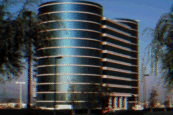
ORACLE's NEW EXCHANGE TOOL UNLOCKS LEGACY INVESTMENTS
 Enhanced Support for Migration from Legacy CASE Tools to Oracle's
Designer/2000 and for Data Warehousing Integration
Enhanced Support for Migration from Legacy CASE Tools to Oracle's
Designer/2000 and for Data Warehousing Integration
Oracle CASE Exchange 4 enables users to exploit the analysis investment in enterprise legacy systems by translating high-level models from various 3GL CASE tools to Designer/2000, the modeling and generation solution for application development against an Oracle7 database.
In addition, Oracle CASE Exchange 4 supports users who require two different design tools as it enables a genuine coexistence of, for example a COBOL-based DB2 environment and an Oracle7 system developed with Oracle's Developer/2000 client/server tool set. In this scenario, Oracle CASE Exchange 4 performs a bridging function as it moves analysis models between tool sets, allowing them to be shared consistently between different implementation architectures.
The third application for Oracle CASE Exchange 4 is architectural support for building data warehouses, as it enables the integration of legacy database models. For example Designer/2000 users building a data warehouse can recover data designs from operational systems and translate them for re-engineering purposes.
Oracle CASE Exchange eases the technical and financial pain for companies that are migrating to state-of-the-art client/server systems and building data warehouses, said Ian Thacker, Oracle's senior vice president Designer/2000 division. "It supports system transitions by protecting investments at the highest system level."
"Exchange is the world leader in meta-data integration," commented Software One founder and chairman Annette Edwards. "Oracle has long understood the importance of meta-data and first adopted Software One's Exchange technology in 1991. We are delighted to continue this joint leadership with Release 4.0 of Oracle CASE Exchange."
Release 4 of Oracle Exchange builds on the groundwork of previous versions with an enhanced meta-model which allows the transfer of logical (analysis) data definitions and logical process definitions as well as the transfer of physical (design) data and process definitions. Because of this extended functionality, release 4 is the first release to enable full migration of complete application models to Designer/2000 where applications may then be generated. Oracle Exchange 4 runs on standard MS-Windows 16-bit configurations. The product is today available for $20,000 (U.S. pricing). As the product operates in a batch process, users need to purchase only one license per site, not per user.
Developer/2000 and Designer/2000
Developer/2000 is the first client/server development tool to
deliver work group-through-enterprise scalability and the only tool on
the market which uses the same programming language on both the client
and the server. Scalable deployment is a reality with Developer/2000
because of several core strengths found in the product, including
drag-and-drop application partitioning, object-orientation, team
productivity and tight integration with Oracle's Designer/2000, the
only second-generation client/server modeling tools available today.
In addition to offering the tightest integration with Oracle7,
Developer/2000 supports heterogeneous database access to a wide
variety of databases, including DB2, Informix, Sybase and
CA-OpenIngres.
Designer/2000 is Oracle's design tool for modeling the business functions that underlie an application. The product supports business process re-engineering, system analysis, software design and code generation. It is used to design an application before actually building it, and its code-generation capabilities allow developers to complete applications more quickly.
According to a recent study by the Technical University of Munich (Germany), Developer/2000 is 67-150 percent more productive than most 4GL's -- and 167-250 percent more productive than C++. The same study stated that the combination of Designer/2000 and Developer/2000 increases the productivity by a factor of two to six when compared to using Developer/2000 independently.
Software One is a software and services company specializing in data interoperability and is acknowledged to be the worldwide technology leader in the meta data interoperability area. Trading since 1989 in the UK, it operates from Marlow, Buckinghamshire, and now employs twenty-five highly skilled people developing and supporting Exchange and consultancy products. While maintaining complete independence, Software One quickly gained endorsement from many of the major players in the computing world. Software One now has a network of corporate relationships with major vendors and an ever-growing customer list.
Oracle Corporation is the world's largest supplier of software for information management, and the world's second largest software company. With annual revenues of approximately $3.5 billion, the company offers its database, tools and application products, along with related consulting, education, and support services, in more than 90 countries around the world.
For more information about Oracle, please call (415) 506-7000. Oracle's World Wide Web address is http://www.oracle.com/.
# # #
Trademarks
Oracle and Case Exchange are registered trademarks of
Oracle Corporation. Oracle7, Designer/2000 and Developer/2000 are
trademarks of Oracle Corporation. All other products or company names
mentioned are used for identification purposes only, and may be
trademarks of their respective owners.
Copyright 1996 Oracle Corporation. All Rights Reserved.